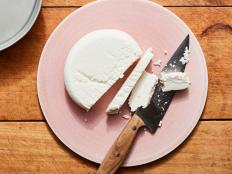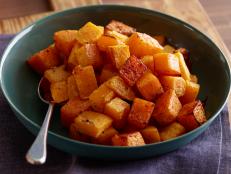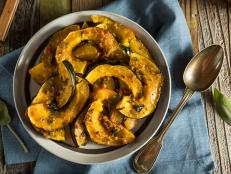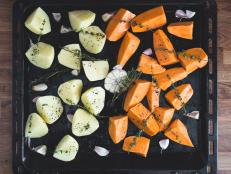5 Ways to Cook Sweet Potatoes


Photographer: Jim Jurica
You may want to sit down for this one: In spite of its moniker, shape and thin outer skin, the sweet potato is not actually related to the common potato. These tubers, first cultivated in South America at about 2500 B.C., are instead part of the morning glory family. While the most recognizable are orange-fleshed, these beauties can be white or yellow inside with their skin ranging from white to yellow, orange, red or purple.
That's the key to knowing these sweet potatoes are a wealth of nutrition: the color. Colorful produce contains valuable phytochemicals, which HELP promote health and combat disease. In addition, these root vegetables are rich in beta carotene, which contain antioxidants that attack free radicals and help decrease the risk or fight certain types of cancer, decrease the risk of cardiovascular disease, lung cancer and even prevent cavities. Beta carotene’s benefits don’t stop there. When consumed, it converts into vitamin A, which helps with growth development and eyesight. And if you’re counting carbs, you won’t be increasing your intake. Even though sweet potatoes are starchier than the white or Irish potato, they contain approximately equal amount of carbs per serving.
When you're shopping for sweet potatoes, look for smooth skin, firm body — something we all want. No bruises or squishy spots. If you're not using them right away, store them in a cool, dark place, but not in the refrigerator — or else you’ll find them growing sprouts and getting moldy.
Again, while there is no relation, sweet potatoes can still be substituted in any recipe for your traditional potato with the cooking time identical. They are fantastic and simple when baked (or nuked), then smashed with a touch of olive oil and salt. (Keep the skin on so as not to strip off any nutrients.) Or you can get a little groovy with one of these recipes:

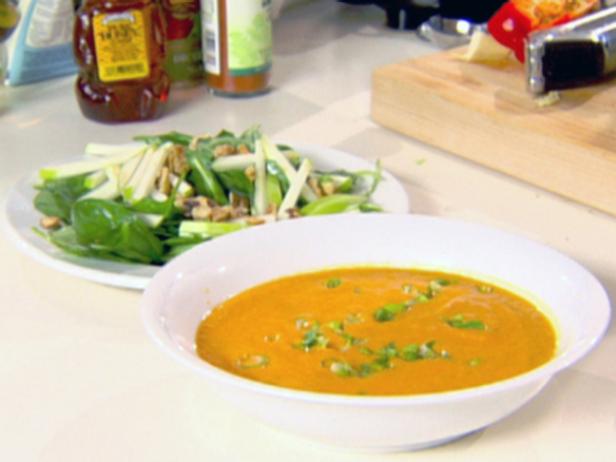
VideoFocus
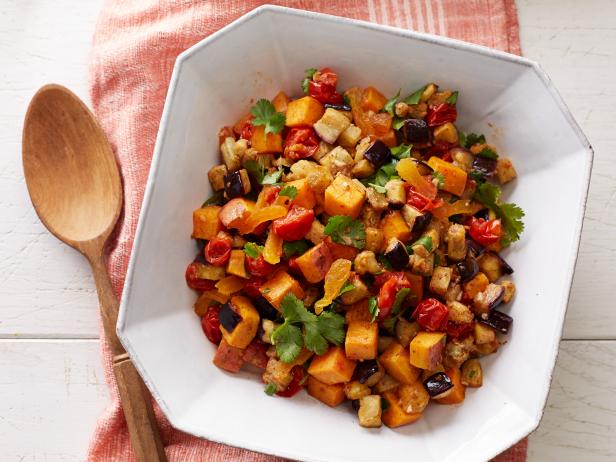
Stephen Johnson, 2014, Television Food Network, G.P. All Rights Reserved
Roasted Moroccan Style Vegetables served with fluffy couscous.
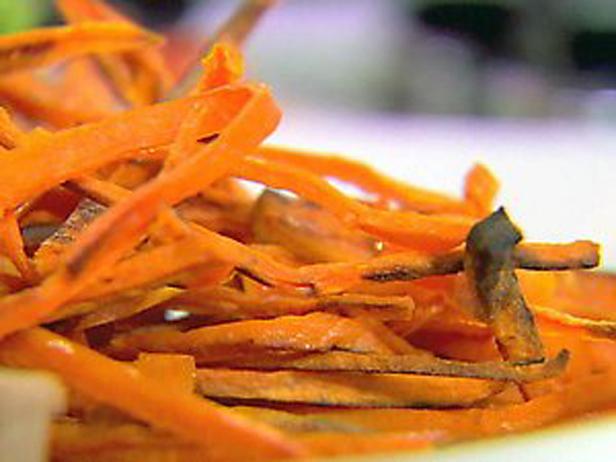

Photo: iStock.com.
Kiri Tannenbaum is a graduate of Le Cordon Bleu Paris and holds an M.A. in food studies from New York University where she is currently an adjunct professor. When her schedule allows, she leads culinary walking tours in New York City and is currently at work on her first book.

























